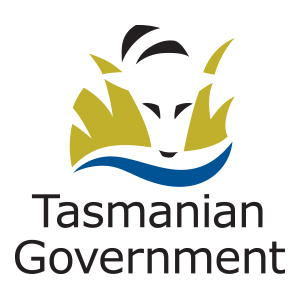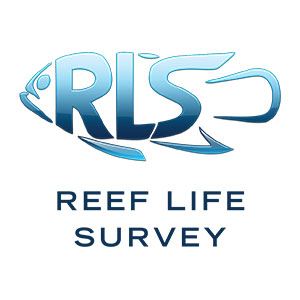At IMAS we work with various organisations and institutions to ensure we provide the very best in advice, education, and expertise to our stakeholders, peers, and students.
The following partners, projects and collaborations make up a vitally important part of our role in providing world-leading scientific and policy-ready research outcomes.
The University of Tasmania (UTAS), in partnership with the Australian National University (ANU), the University of New South Wales (UNSW), and 40 other national and international research institutions and Universities have formed the Australian Centre for Excellence in Antarctic Science.
ACEAS will conduct world-leading research into changes that are happening in the Antarctic and Southern Ocean and the impacts that the changes are having on the global climate system.
The research will provide the national-scale research capacity required to advance knowledge and hone predictions of Antarctica’s complex ice-Earth-ocean-atmosphere-ecosystem interactions that govern future changes and impacts. New data will improve predictions of the nature and rate of future change, enabling Australia to better safeguard against the worst impacts.

The Blue Economy CRC will, for the first time bring the aquaculture and renewable energy sectors together to address the challenges of offshore food and energy production, that leverages the benefits of colocation, vertical integration, infrastructure and shared services. Offshore engineering will be central to this emergence, leveraging decades of experience drawn from the shipping, defence, oil and gas industries.
The Australian Antarctic Program Partnership (AAPP) is an Australian Government funded initiative through the Antarctic Science Collaboration Initiative program to better understand the role of the Antarctic region in the global climate system and the implications for marine ecosystems.
Core partners of the AAPP are the Australian Antarctic Division (AAD), CSIRO, the University of Tasmania (UTAS), and the Bureau of Meteorology (BoM). Other partners include Geoscience Australia (GA), the Tasmanian State Government and Australia’s Integrated Marine Observing System (IMOS).

The Centre for Marine Socioecology makes use of the critical mass of nationally and internationally leading researchers present in Hobart.
The Centre brings together a wide variety of disciplines: oceanography, ecology, economics, policy, law and social science. These disciplines are in active collaboration to directly address the theory and applied sides of marine socio-ecological systems.
The Centre is a collaboration between the University of Tasmania (via IMAS), CSIRO and the Australian Antarctic Division and is hosted at our Waterfront building in Hobart.

The Sustainable Marine Research Collaboration Agreement (SMRCA) between the Tasmanian State Government and the University of Tasmania was established to support research on Tasmanian marine resources, including commercial and recreational fisheries, wild harvest and aquaculture.
Our strategic approach to the SMRCA attempts to balance the economic, social and environmental factors that contribute to ensuring a sustainable and productive future; engaging with industry and other partners for the long term prosperity of both Tasmania and the broader Australian community.

Redmap stands for Range Extension Database and Mapping project. This project invites Australians to share sightings of marine species that are 'uncommon' to their local seas.
Redmap uses this citizen science data to map which Australian marine species may be extending their distribution in response to changes in the marine environment, such as ocean warming.
This data also highlights regions and species that may be experiencing more distribution changes, so that research can be focused into these areas.

Reef Life Survey (RLS) aims to improve biodiversity conservation and the sustainable management of marine resources. This is achieved by coordinating surveys of rocky and coral reefs using scientific methods. The ultimate goal of RLS is to improve coastal stewardship.
RLS has established the first global baseline of marine biodiversity using consistent methods, which includes abundance data for over 3500 marine species at more than 2000 sites in 40 countries.
This information is used to track changing ecosystems, allowing managers and scientists to better understand how human society affects the marine environment, and to identify better ways forward to reduce threats.

The Integrated Marine Observing System (IMOS) is one of the national research infrastructure capabilities currently supported under the Australian Government's National Collaborative Research Infrastructure Strategy (NCRIS).
Since 2006, IMOS has been routinely operating a wide range of observing equipment throughout Australia's coastal and open oceans, making all of its data accessible to the marine and climate science community, other stakeholders and users, and international collaborators.

TPAC operates sophisticated e-Research capabilities on behalf of Australian and IMAS researchers. We host research collections from research programs and research observing systems.
TPAC has more than 1 petabyte of collections being hosted and served to the research community representing research investments in excess of $250m. This facility is an investment of over $5m in hardware by National Collaboration Research Infrastructure Service (NCRIS).

The international science community has long recognised the need for a coordinated and integrated approach to observing the Southern Ocean.
Under the direction of the Scientific Committee for Oceanic Research and the Scientific Committee for Oceanic Research, and with the input of the World Climate Research Programmes' Climate and Cryosphere (CliC) and Climate Variability and Predictability (CLIVAR) projects, and the Partnership for Observation of the Global Oceans (POGO), the concept for the Southern Ocean Observing System (SOOS) was developed.